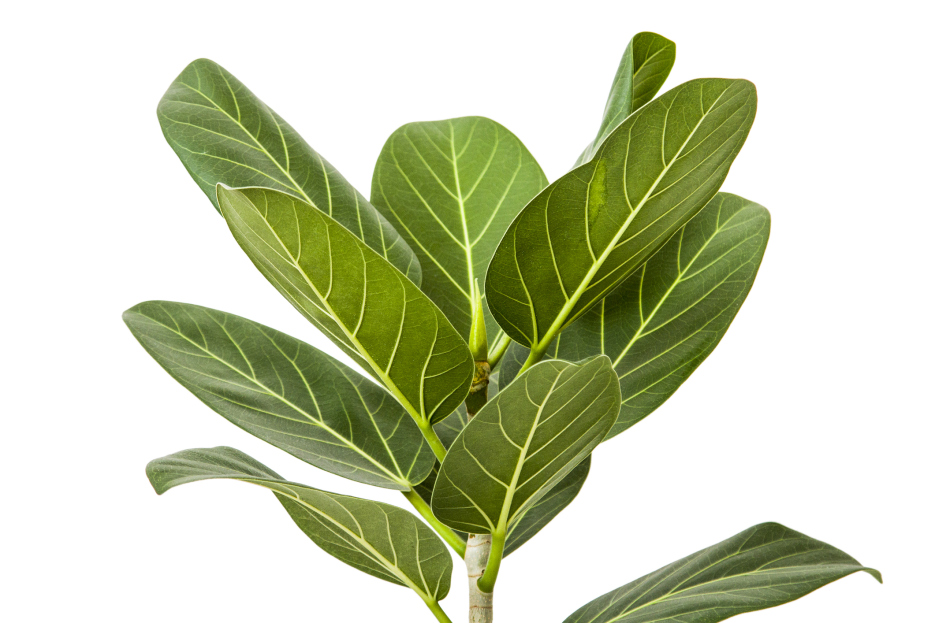
Ficus Audrey, also known as Ficus benghalensis, is a beautiful, tree-like indoor plant admired for its velvety green leaves and soft, light-colored veins. Native to India and Southeast Asia, it is the national tree of India and is revered for its majestic canopy in nature. Indoors, it's known as the gentler, easier cousin of the Fiddle Leaf Fig (Ficus lyrata)—offering a similar bold statement without as many of the temperamental tendencies.
If you're looking for a dramatic yet forgiving indoor tree, Ficus Audrey is an excellent choice. Here’s how to care for it:
Ficus Audrey thrives in bright, indirect light. A room with large windows or a spot near a sunny window (but out of direct afternoon rays) is ideal. While it can tolerate medium light, it may grow more slowly and have thinner foliage.
Avoid harsh direct sun, especially from west-facing windows, as this can scorch the leaves. If your plant isn’t getting enough light, it may become leggy or start dropping leaves.
Water your Ficus Audrey when the top 2 inches of soil feels dry to the touch. This usually means watering every 7–10 days in spring and summer and less frequently during cooler months. Always water thoroughly and allow excess to drain from the bottom of the pot.
This plant does not like to sit in soggy soil—overwatering is one of the most common causes of problems, leading to yellowing leaves or root rot. Letting the soil dry slightly between waterings helps mimic its natural dry-season cycle.
Ficus Audrey prefers moderate to high humidity, although it’s generally more tolerant of normal indoor conditions than some other tropical plants. If your home is particularly dry—especially in winter—consider using a humidifier, pebble tray, or grouping it with other plants to raise humidity levels.
It thrives in temperatures between 65–85°F (18–29°C) and should be kept away from cold drafts, air vents, or sudden temperature changes.
Use a well-draining, loamy soil mix—something rich but breathable. A high-quality indoor potting mix with added perlite or coarse sand works well. Good drainage is essential, so always use a pot with drainage holes.
Repot your Ficus Audrey every 1–2 years or when it becomes root-bound. Spring is the best time to repot, allowing the plant to adjust and grow into its new container during the active season.
Feed your Ficus Audrey during its growing season (spring through early fall) with a balanced, water-soluble fertilizer diluted to half strength. Apply about once a month. Avoid fertilizing in winter, when the plant naturally slows its growth.
Too much fertilizer can cause salt buildup in the soil, which may lead to leaf browning—so don’t overdo it.
Prune to shape your plant or encourage fuller growth. Use clean, sharp scissors or pruning shears to trim back any overly long branches or remove damaged or yellowing leaves.
Ficus Audrey may drip sap (a white latex substance) when pruned—this is normal but can irritate skin or pets, so take precautions. Wipe leaves occasionally with a damp cloth to keep them clean and support healthy photosynthesis.
Ficus Audrey can be propagated through stem cuttings, though success rates can vary. Cuttings should include at least one node and be placed in water or soil with high humidity and warmth. Rooting hormone can help increase the chance of successful propagation, but this is generally a slower process.
Ficus Audrey, like many ficus species, is toxic to pets if ingested. It contains a milky sap that can cause mouth irritation, drooling, or digestive upset. Keep it out of reach of cats, dogs, and small children.
This plant generally adjusts well if kept in stable conditions and recovers quickly once its needs are met.